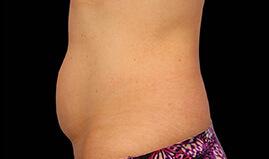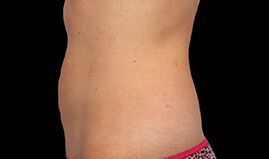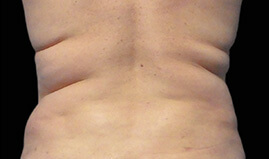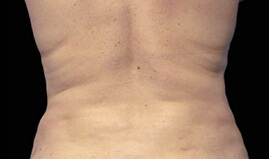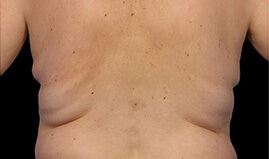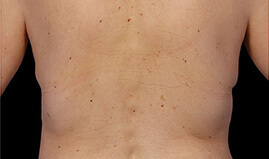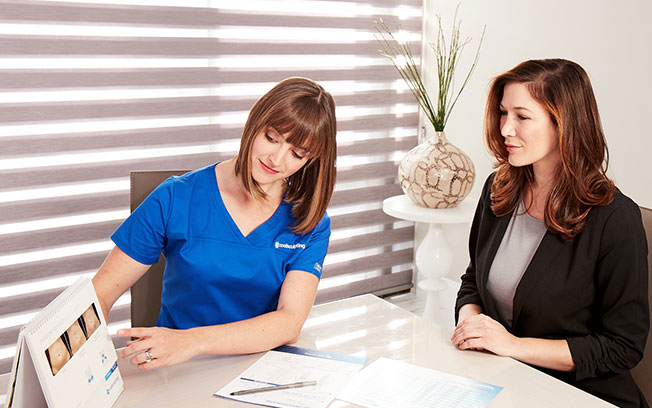CoolSculpting has quickly become one of the most popular ways to reduce fat in trouble areas. Most often, people who are close to their goal weight, but are still struggling to get rid of stubborn fat turn to CoolSculpting because it’s fast, it’s easy, and it’s far more affordable than surgery (like liposuction). Who wouldn’t want to try it?
Celebrities like Sex and the City star Kristin Davis, reality TV mainstay Khloe Kardashian and supermodel Molly Sims have all tried it and loved their results, which has only spurred increased interest.
Of course, one of the major concerns with any medical procedure is how safe it is. So how safe is CoolSculpting? What are the risks? How severe are the side effects? And is it painful? Here’s what you need to know about cryolipolysis before you try it.
Contents
What Happens During a CoolSculpting Session?
CoolSculpting is the most popular brand name for the machine that performs a procedure called cryolipolysis, the process of freezing fat cells to death. Cryolipolysis is performed in an office or medical spa setting — it does not require anesthesia or scalpels, and comes with little-to-no downtime for recovery afterward.
During the procedure, a clinician attaches applicators to the treatment area for a specified period of time (some treatment areas require about an hour, while others are as short as 40 minutes). But before we turn the machines on and make sure everything is set, we make sure you’re completely comfortable — after all, you’ll be still for a while. We can prop you up with pillows and cover you with blankets to make sure you don’t get too cold.
After the applicators are securely attached to the body (separated by a thin film to protect the skin and ensure a seal is maintained), the clinician turns the machine on. The procedure itself is automated. The client is free to do whatever they’d like, assuming that the treatment area is left relatively motionless. The clinician will probably leave the room to go help other clients, so you’ll have some privacy. Some of our clients even sleep during their CoolSculpting procedure!
When the procedure is over, the clinician will remove the applicators, then clean the treatment area to remove any residue from the film and smooth out the fat cells under the skin. Because of the cold temperatures, the fat cells tend to conform to the shape of the applicator, which sometimes shocks our clients — but don’t worry! This effect is temporary and the clinician will remedy it before you leave.
Once the clinician is done and you’re dressed, you’re free to leave. There’s no post-op period because well… it’s not surgery. We don’t need to monitor you afterward, so you can be on your way. Some people book their CoolSculpting appointments for their lunch-hour and head back to work afterward (of course, depending on how long you can take for lunch and how long the treatment will take). Some book them right after work before they meet friends for dinner.
Is CoolSculpting Safe?
CoolSculpting is perfectly safe for most people. As such, the FDA has cleared multiple treatment areas on the body — upper arms, back and bra fat, chin, flanks (love handles), male chest, thighs, and abdomen.
For actress Kristin Davis, the safety of the procedure was one of its biggest selling points. Davis specifically said she’s “scared of needles, scared of complications, and scared of doing something that looks bad and not being able to go back and fix it.” Therefore, she was incredibly intrigued by CoolSculpting — it can deliver results without surgery, there’s very little risk of something going wrong, and there are no needles involved. It’s a win-win.
The cryolipolysis procedure is overwhelmingly well-tolerated by almost everyone who chooses to do it. In 2015, researchers studied 16 published articles on CoolSculpting that included 1,445 clients. Of those included in the study, only 12 clients (0.82%) experienced complications “with the most common being diminished sensation [in the treatment area] lasting greater than 4 weeks.”
The success rate has a lot to do with the fact that it’s non-invasive, but also the science behind the procedure — the temperature is perfectly regulated so the fat cells are freezing, while the skin cells and organ tissue remain undamaged.
Who Should NOT Get CoolSculpting?
There are certain circumstances where CoolSculpting may not be recommended, such as if you have been diagnosed with any of the following disorders:
- Cryoglobulinemia – This is a disease in which there are abnormal proteins in the blood (cryoglobulins). At temperatures lower than 98.6 degrees Fahrenheit (37 degrees Celsius) these proteins may clump together, which can have detrimental effects on blood circulation. This can cause nerve, joint and organ damage.
- Cold agglutinin disease – This rare disease causes antibodies called cold agglutinins to attack your red blood cells, rather than perform the usual function of antibodies: to fight off viruses or bacteria. When the blood is exposed to temperatures between 30 and 50 degrees Fahrenheit (negative one to 10 degrees Celsius), these antibodies attach to the red blood cells and kill them. This can lead to anemia.
- Paroxysmal cold hemoglobulinuria – PCH is an extremely rare form of anemia, classified as an autoimmune hemolytic anemia (AIHA), a group of autoimmune disorders in which the immune system attacks healthy red blood cells. While modern medicine has largely found ways to treat these types of diseases, it should be known that exposure to cold causes complications with PCH. If you have been diagnosed with PCH, CoolSculpting may not be a good solution for you.
CoolSculpting Risks
Because CoolSculpting is an overwhelmingly safe procedure, there are very few serious risks associated with it. Aside from the few medical conditions listed above that would cause a doctor to caution a client against CoolSculpting treatments, the rate of complication is so rare there is very little risk associated with cryolipolysis.
Side effects are typically minimal, temporary and easy to manage. They rarely require additional medical intervention or follow-up.
Common CoolSculpting Side Effects
During a CoolSculpting procedure, some of the most common side effects are coldness, suction, pulling, and stinging (as cold things sometimes do when exposed to our skin — like if you hold a bag of frozen food for too long).
After the procedure is over, some clients experience numbness, swelling, soreness, redness, sensitivity, and/or bruising in the treatment area. These are all temporary after-effects and will go away on their own without a follow-up visit.
However, if you experience severe and persistent side effects, contact your doctor immediately so he or she can perform an assessment.
Rare CoolSculpting Side Effects
In rare cases, some people experience something called Paradoxical Adipose Hyperplasia (PAH), which means the fat cells in the treatment area actually grow instead of shrink. The medical community is unsure as to why this happens to some people. While it’s most commonly found in men, women are also able to experience this condition.
Paradoxical adipose hyperplasia does not go away on its own, so be sure to contact your doctor if you are noticing the treatment area growing larger over time (and it cannot be explained by weight gain). Though no one wants experience this, rest assured that it’s only a cosmetic issue. In the rare case that PAH occurs, it can easily be treated with liposuction of the affected area.
With all this discussion of very cold temperatures, sometimes our clients ask about frostbite or damage to the skin. Fortunately, there’s no risk of frostbite because the temperature at which fat freezes is higher than the temperature at which water freezes — and since our bodies are mostly made of water, the surrounding tissue is perfectly safe.
Is CoolSculpting Painful?
While everyone has a different pain tolerance, CoolSculpting isn’t typically considered painful by those who’ve had the procedure done. Some people say it’s uncomfortable at times. Remember that the procedure involves subjecting the treatment area to very cold temperatures and strong suction for a period of time — about an hour, on average.
Therefore, most people describe the CoolSculpting procedure as being just that: cold. Some of our clients have described the procedure as feeling as though someone is rubbing IcyHot on the treatment area.
Are You Ready to Book A CoolSculpting Session?
At DaVinci Body Sculpting, CoolSculpting is all we do and we take pride in our ability to accurately assess our clients’ goals so we can find solutions that will help them take the next step. If you’re interested in booking a session or want to find out more about your options, get in touch with us today to schedule your consultation.
In the meantime, check out our before and after photos so you can see the CoolSculpting results others have experienced. While you’re here, read some reviews, and feel free to call us if you have any questions at all. We look forward to hearing from you!
